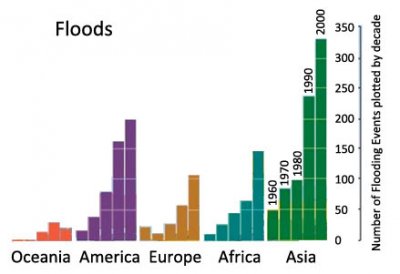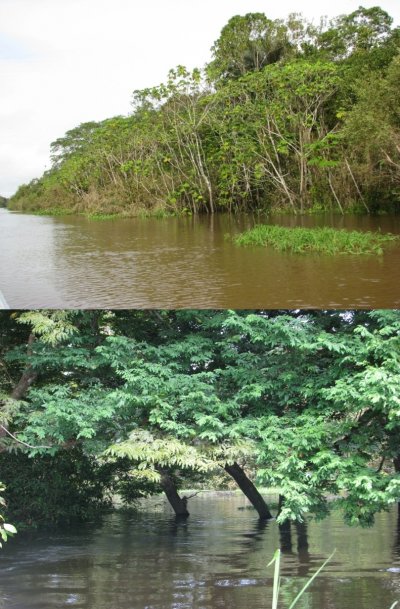Fig_18.1.jpg

Figure 18.1 Flooding events in various regions of the world. Graphs show the number of floods classified as a disaster in the International Disaster Database of the University of Louvain, Belgium, for decades from 1950 through 2000. Floods resulted from rivers after heavy rainfall or snow melts, and coastal flooding. Data from the Millennium Ecosystem Assessment map (http://maps.grida.no/go/graphic/number-of-flood-events-by-continent-and-...).
Chapter editor: Tim Colmer, School of Plant Biology, The University of Western Australia
Contributing authors: TD Colmer1, BJ Atwell2, AM Ismail3, O Pedersen1,4, S Shabala5, B Sorrell6, LACJ Voesenek7.
1School of Plant Biology, The University of Western Australia; 2Department of Biological Sciences, Macquarie University; 3International Rice Research Institute, Philippines; 4Department of Biology, University of Copenhagen; 5School of Land and Food, University of Tasmania; 6Department of Bioscience, Aarhus University; 7Institute of Environmental Biology, Utrecht University
Flooding, resulting in soil waterlogging and in many situations even complete submergence of plants, is an important abiotic stress in many regions worldwide. The number of floods has increased in recent decades (Figure 18.1), and the severity of floods is expected to increase further in many regions of the world.
Flooding reduces agricultural production, and floods shape many natural plant communities (e.g. floodplains, wetlands, salt marshes). A spectacular example of an important natural ecosystem shaped by flooding is the Amazon Floodplain forests, in which seasonal floods are deep and prolonged (Figure 18.2).
Tolerance of plants to soil waterlogging, and to shoot submergence, varies greatly; ranging from many very sensitive ‘dryland’ species (including most of our crops) to highly tolerant species such as rice and other wetland species. In addition, aquatic and marine plant species have adopted submerged lifestyles under water. Knowledge of tolerance mechanisms will underpin future breeding of more robust crops, and understanding plant responses to flooding will aid management of plant communities in flood-prone environments. Recent breakthroughs in submergence tolerance research on rice resulting in new varieties will help sustain a growing world population (see Case Study 1), and has improved knowledge of plant adaptive mechanisms to flooding stress.
This chapter summarises the adverse conditions faced by plants when water is in excess, and acclimations and adaptations to flooding stress. We consider the situations for roots in waterlogged soils, and for shoots submerged by overland floods. Four case studies highlight important developments in plant flooding research. The chapter demonstrates that interdisciplinary research in plant sciences has improved knowledge of plant flooding tolerance, with applications in crop breeding.

